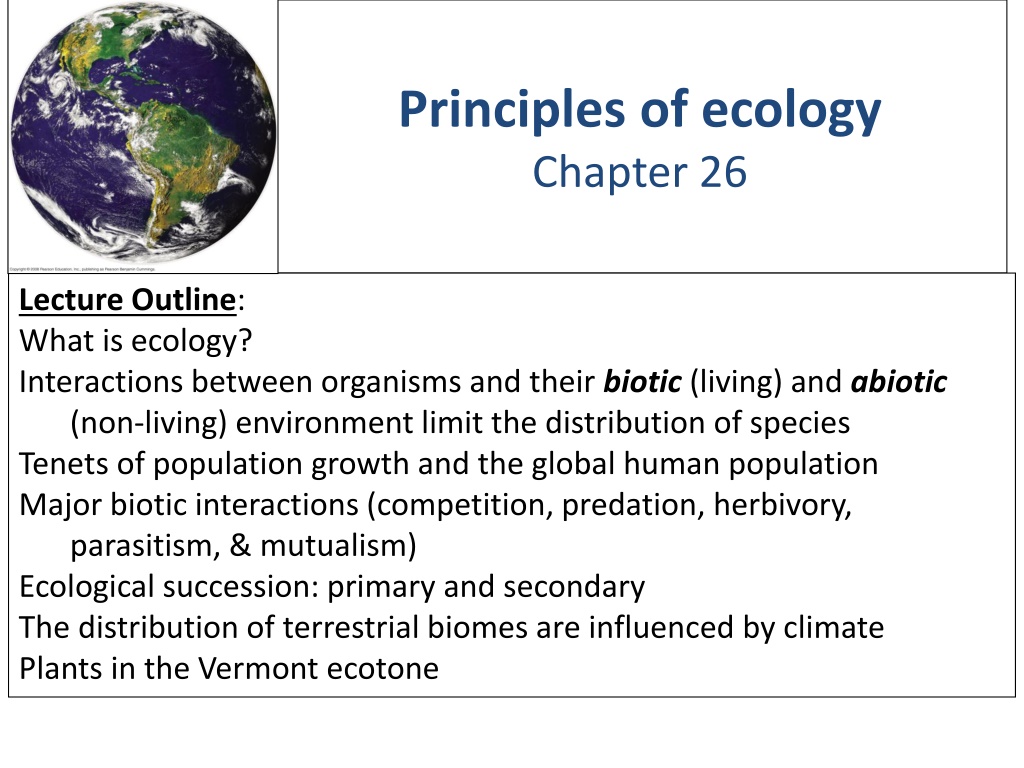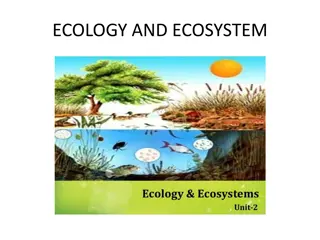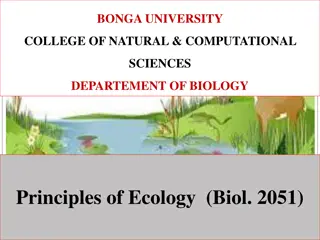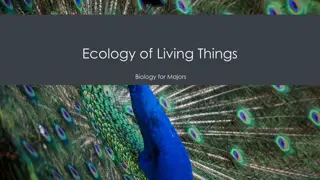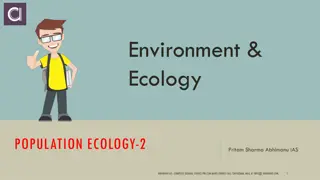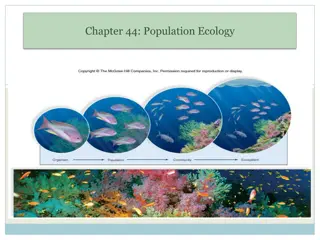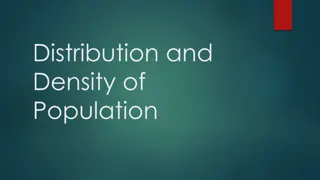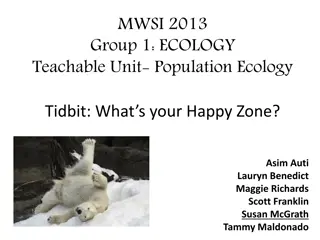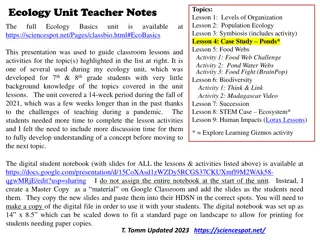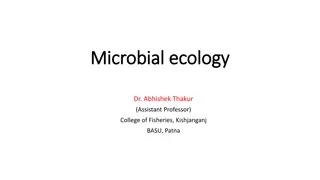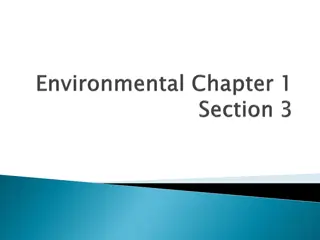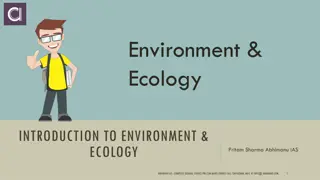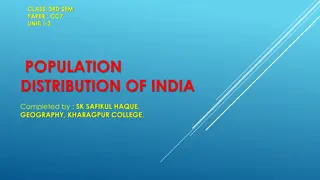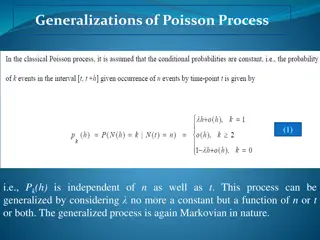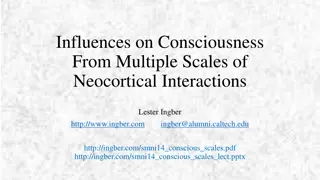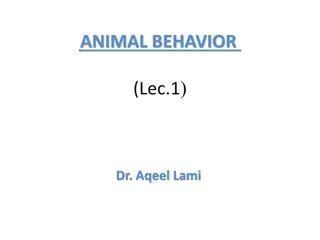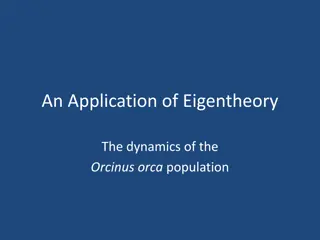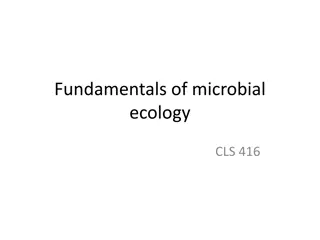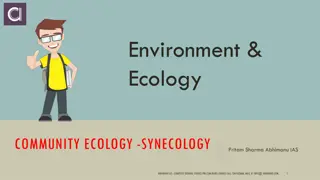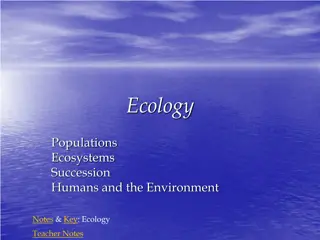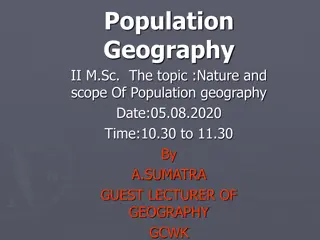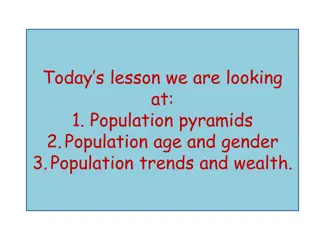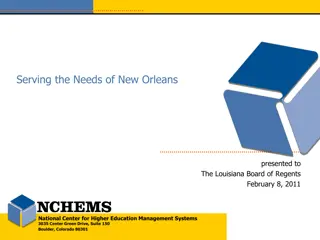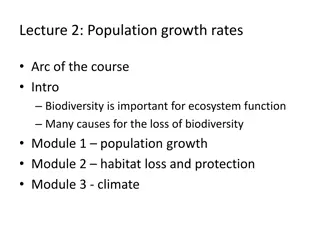Exploring Ecology: Interactions, Distribution, and Population Dynamics
Ecology delves into the relationships between organisms and their environment, understanding factors that limit species distribution, major interactions like competition and predation, as well as population growth patterns. This includes the influence of biotic and abiotic factors, ecological succession, and the impact of climate on biome distribution. Through analyzing population ecology, researchers uncover the factors shaping population sizes over time, considering concepts like carrying capacity and logistic growth.
Download Presentation

Please find below an Image/Link to download the presentation.
The content on the website is provided AS IS for your information and personal use only. It may not be sold, licensed, or shared on other websites without obtaining consent from the author. Download presentation by click this link. If you encounter any issues during the download, it is possible that the publisher has removed the file from their server.
E N D
Presentation Transcript
Principles of ecology Chapter 26 Lecture Outline: What is ecology? Interactions between organisms and their biotic (living) and abiotic (non-living) environment limit the distribution of species Tenets of population growth and the global human population Major biotic interactions (competition, predation, herbivory, parasitism, & mutualism) Ecological succession: primary and secondary The distribution of terrestrial biomes are influenced by climate Plants in the Vermont ecotone
What is ecology? Greek: oikos = home The study of how organisms interact with other living organisms and their environment. An ecologist may ask... where do species occur and why? Ecology environmentalism
Thinking like an ecologist what factors may limit the distribution of a species? 1. Biotic (living) factors 2. Abiotic (non-living) factors 3. Dispersal 4. Habitat selection Sugar maple (Acer saccharum) distribution: SE Canada, eastern US west to central Iowa
Population ecology analyzes what factors affect population size and how and why it changes through time. http://www.plantanswers.com
Exponential (J-shaped) population growth 2,000 Growing more quickly Population size (N) 1,500 Growing more slowly = 1,000 500 0 0 5 10 15 Time (# generations)
Carrying capacity carrying capacity (K) - the maximum number of individuals (N, population size) that can be supported by the available resources. What resources do plants need? nutrients water light
Logistic (S-shaped) population growth 2,000 Exponential Exponential growth growth Population size (N) 1,500 Carrying capacity = 1,500 individuals Logistic growth Logistic growth 1,000 500 0 0 5 10 15 Time (# of generations)
Ecological interactions between species include... Competition (-/-) Predation (-/+) Herbivory (-/+) Parasitism (-/+) Mutualism (+/+)
Pollination is an example of a mutualism Cacao flowers To produce the fruits that are used to make chocolate, first flowers must be pollinated by midges. Cacao fruits Fruits (pods) of the chocolate tree (Theobroma cacao)
Hornworm caterpillar (herbivore) - - Tomato plant Braconid wasp (parasite) +
Succession - following disturbance, species colonize and transform the habitat in a predictable sequence Exposed rocks Lichens, mosses, small invertebrates Sedges, grasses, larger invertebrates, small mammals Shrubs, pines, birch, larger mammals, birds, oaks
Secondary succession occurs where an existing community has been cleared by some event, but the soil is left intact. 13
Secondary succession on an abandoned farm in Vermont Annuals (weeds like crabgrass) 1-2 years Perennials (herbs and tall grasses) 2-5 years Young pine seedlings in tall grass 5-10 years Pine forest 10-150 years Deciduous hardwood forest (climax) 150+ years
Temperate grassland Desert Tropical forest 30 Annual mean temperature ( C) Temperate broadleaf forest 15 Northern coniferous forest 0 Arctic and alpine tundra 15 0 100 200 400 300 Annual mean precipitation (cm)
Vermont is an ecotone between the temperate broadleaf forest and northern coniferous forest A survey of spring native plants of Vermont
serviceberry Amelanchier laevis, Allegheny serviceberry Rose Family, Rosaceae
Spring beauty, Claytonia caroliniana Purslane Family, Portulacaceae
Dicentra cucullaria, dutchman's breeches Fumariaceae (Fumitory Family)
By Basefilm - Own work, CC BY-SA 3.0, https://commons.wikimedia.org/w/index.php?curid=10350976 Photo by Laura Hill
Wild leeks/ramps, Allium tricoccum Amaryllis family, Amaryllidaceae
POISON!!! Veratrum viride false hellebore, a poisonous plant in the lily family (Liliaceae)
Lecture Review, Chap 26 What are 4 possible factors that limit where a species can exist? Define primary and secondary succession. During both primary and secondary succession, how might the early pioneer species facilitate the arrival of another species? Why do Vermont forests consist mostly of temperate broadleaf and northern coniferous forest species? Compare and contrast exponential and logistic population growth. What does logistic growth take into consideration that exponential growth does not? Explain how biotic and abiotic factors both work to control a population s growth How are populations kept in check so they do not overexploit the environment? What are the major categories of interspecific interactions? Give an example from nature of each kind of interaction. Distinguish between the following sets of terms: competition, predation, herbivory, symbiosis; parasitism, mutualism.
